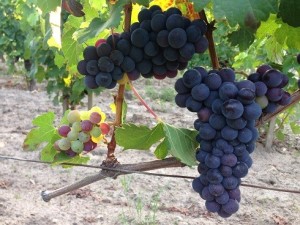Bordeaux was hit by spring frost by the end of April 2017. Four nights with temperatures below 0°C succeeded between April 20 and April 28, among which most damage on the vines was recorded during the morning of April 27. In general, the risk of spring frost is not particularly high in Bordeaux. The last time yield were strongly impacted by frost was back in 1991. In 2017, the effect of the topography on spring frost damage was particularly striking. Damage was severe in the valleys, because of the accumulation of cold air lakes, while most of the slopes and plateaus escaped. The spring was warm and June was rainy. The weather was nice and dry in July and September, creating very good conditions for vineyards which were not impacted by the frost. Rainfall was close to average in September, causing some issues with Botrytis. Overall, the quality is good to very good, except for the vineyards hit by the frost. After a spring frost event, new shoots develop which lag four to five weeks behind shoots which escaped from the frost. As a result, two generations of grapes coexist in the same vineyard, making the choice of harvest dates particularly difficult. Some growers successfully tagged damaged and undamaged vines and harvested them separately by hand, each subsequent generation of grapes at its perfect ripeness stage. With substantial effort, these growers managed to produce fine wines in a particularly challenging vintage.
Subscribe to our newsletter

With the contribution of the LIFE financial instrument of the European Union
Under the contract number: LIFE13 ENVFR/001512
Under the contract number: LIFE13 ENVFR/001512
Cu contribuţia instrumentului financiar LIFE al Uniunii Europene
Numărul contractului: LIFE13 ENVFR/001512
Numărul contractului: LIFE13 ENVFR/001512
Avec la contribution de l’instrument financier LIFE de l’Union Européenne
Sous le numéro de contrat : LIFE13 ENV/FR/001512
Sous le numéro de contrat : LIFE13 ENV/FR/001512
Gefördert im Rahmen des LIFE Programms der europäischen Union
Förderkennzeichen: LIFE13 ENVFT/001512
Förderkennzeichen: LIFE13 ENVFT/001512






